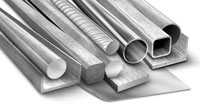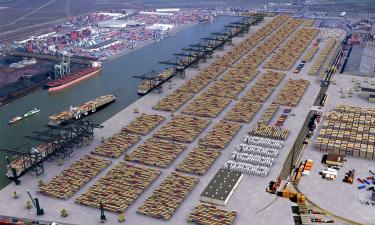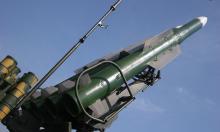Now is the time to make the move to Russian steel
A combination of economic and political factors has swung heavily in the favor of Russian steel production and now offers Europe and to a smaller extent, North America, an opportunity worth pursuing and capitalizing on.

The first true Russian steel/iron works and forge shops date back to the late 1600s and Peter the Great's reforms. That gives Russian steel production a history of over 350 years. Production continued to expand and increase in quality for the duration of that period and now offers some of the highest quality material in the world. Furthermore, as the late 1990s and 2000s progressed, Russian steel output grew very quickly, making Russia the 3rd largest producer of steel, speciality steel and semi and fully finished steel products. Steel and steel components, both forged and cast, are Russia's biggest exports, after petro chemicals.
As the Bank Panic of 2008 and the Economic Collapse of 2009 proceed, Russian open capacity sky rocketed. A large portion of Western European demand disappeared and internal credit crunch conditions have created a lot of work that can not be done without payment upfront. Russian steel mills and metal works have, unlike the West, not responded by mass layoffs but have cut every one's hours to half or less. This gives them the ability to very quickly upscale production, without having to go through a rehiring process. Further, Russian steel prices have come down heavily, both due to a heavy drop in the cost of steel, a lack of demand and the devaluation of the ruble. Add to this, the Medvedev government's decision to loan, at zero percent interest, large sums of money to retool heavy industry, and Russia offers potentials found in few other places, in today's world.
Let us now proceed through each of these steps and advantages, covering both the internal markets and the main Russian low cost country competitors: China and India.
To begin with, Russian steel fell heavily. How heavily? Let us examine plain 1040 carbon steel: at the height of the bubble, 1040 steel sold for $1,000 per metric ton. By early December it was selling for 253 Euro, a drop of 67% in price. Since then it has edged up to a whopping 269 Euro to 292 Euro, so about 60-65% below their August peak. This is a greater drop then in any other market, to include China. Furthermore, a metric ton of 4130, moly-carbon steel can be acquired for approximately 500 Euro or almost at half the price of Western European steel mills and for large quantities further reductions are possible.
The continued reduction in the value of the Ruble is also playing a hard downward pressure on the cost of Russian steel. The ruble went from a height of 16.75 Rubles per Euro, on 15 August 2008 to a present, 22 February 2009 rate of 46 Rubles per Euro, a drop of 174%. The Ruble is continuing to decline and will more than likely bottom out somewhere around 50-55 Rubles per Euro.
At this rate, it is quite capable to earn a savings of 40-50% on forged, open and closed die, and cast steel products on existing Russian technology, a mixture of both old Soviet machinery and state of the art modern equipment. As new Russian equipment, both domestically produced and foreign bought, comes on line, the technological advantage should improve returns by as much as 10% additionally.
Russia vs. China
In comparison with China, Russia offers many advantages. First amongst these, is a cheaper steel price. A key component of modern steel production is scrap, of which China has precious little and imports it from the US. This in turn drives Chinese scrap prices, on average, up to 100 Euro higher than that of the world market. Secondly, Russia offers a high quality of steel, something that China can not, consistently. If one wants 1030/1040 carbon steel for forks and cheap knives, China is your source, but if high quality steels are required that must bear much pressure and weight, a supplier is playing with fire in China. Furthermore, in China, it is what is inspected that is delivered not what is ordered, often resulting in poor quality porous steel that is good only for junking. Russian steel production, especially for common 4130/4140 (both considered high alloy steels in China) is of top notch quality, rivaling and surpassing anything in the West.
Furthermore, on a geo-political front, Russia is a much more stable nation then China, in the present. China, already in a recession, is facing major civil unrest that threatens to spill over into something much worse. Furthermore, when Chinese manufacturers disappear, and over 100,000 did in 2008 alone, they often disappear with the customer bought raw materials and there is nothing that companies can do to regain it. The Rubles devaluation has allowed Russia to compete directly with China, without forcing its workers to live in barracks and work as little more than indentured servants.
Lastly, Chinese production takes on average 2 months at sea to reach a southern European port, critical delays that require much higher transportation bills and larger inventory to carry through this long period. Central Russia (Ural district) to Western Europe is 15 days by truck or about three weeks by train, loading and unloading. Cost are also significantly cheaper. A 19 metric ton container will cost around 2,000 Euros to transport, or 105 Euros per ton. Of course you will be renting the whole container whether you are moving that much mass or not. Rail from Russia runs at approximately 80 Euros per ton and you are only charged for what is actually transported.
Russia vs. India
Russia offers several advantages over India also. Though quality wise, the Indians are mostly on par with Russia, they can not help their geographical location. This means that an average shipment from India to southern Europe takes around 40-45 days. First north-south short range transports take goods to Sri Lanka for consolidation. Yes the same war torn Sri Lanka you hear about with their Tamil Tigers blowing themselves up. After re-consolidation, which can take from a day to two months, long haul transports must take the cargo to Europe, passing by the Horn of Africa and hoping to either not get raided by pirates or to find a military escort. To the US the trip is even longer, taking often as much two plus months.
Russia offers another advantage: geopolitical stability. Most people tend to forget that nuclear armed India has an endless border war with it nuclear armed neighbor Pakistan, with whom it has already fought three wars. They also tend to forget that Pakistan is deteriorating very quickly under Jihadist onslaught. As such, keeping major points of supply in India could be an economic disaster, should the situation heat up any further.
Stanislav Mishin
The article has been reprinted with the kind permission from the author and originally appears on his blog, Mat Rodina
Subscribe to Pravda.Ru Telegram channel, Facebook, RSS!





